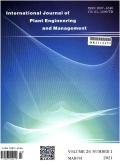Application of Virtual Reality Technology in Nuclear Power Plant Control Room Simulator
International Journal of Plant Engineering and Management
Pub Date : 2018-07-22
DOI:10.1115/ICONE26-81163
引用次数: 4
Abstract
Main control room simulator is widely used in design verification and operator training for nuclear power plant. The simulator needs to implement the arrangement, environment, human machine interface and function of main control room, which should be the same as much as possible. For designer, each type of reactor needs an individual simulator for design verification. As the number of unit increased, the simulator will consume a lot of space and difficult to reuse for other project. In addition, design verification for control room and I&C system need to start at the early stage of a project and is usually an iterative process with the design work. Build a control room facility for simulator needs a lot of time and is difficult to modify once constructed. To make the simulator more flexible and match the project schedule, virtual reality technology can be used to replace or extend traditional control room simulator with approximately the same arrangement, environment, human machine interface and function. In the full scope engineering simulator of HPR1000 unit, virtual reality control room interface has been designed as an extension of real control room implementation. The designer or operator can control and monitor the power plant in virtual reality environment, which just feels like real control room. It also can be used for other type of reactor by connecting to other simulator server and adding corresponding control room model in virtual reality software. With this preliminary application, control room simulator can be implemented in a short time and flexible for modification, which give designer more time and space for design verification and optimization. Once it applied in training simulator of nuclear power plant in future, it may provide a low cost and flexible option for operator training.虚拟现实技术在核电站控制室模拟器中的应用
主控室模拟器广泛应用于核电站设计验证和操作人员培训。仿真器需要实现的主要控制室的布置、环境、人机界面和功能应尽可能相同。对于设计者来说,每种类型的反应堆都需要一个单独的模拟器来进行设计验证。随着单元数量的增加,模拟器将消耗大量的空间,并且难以在其他项目中重用。此外,控制室和I&C系统的设计验证需要在项目的早期阶段开始,并且通常是设计工作的迭代过程。模拟器控制室设施的建设需要大量的时间,而且一旦建成就很难进行改造。为了使仿真器更灵活、更符合工程进度要求,可以利用虚拟现实技术对传统的控制室仿真器进行替换或扩展,使其在布置、环境、人机界面和功能上保持基本一致。在HPR1000机组全范围工程模拟器中,设计了虚拟现实控制室接口,作为真实控制室实现的延伸。设计人员或操作人员可以在虚拟现实环境中对电厂进行控制和监控,就像真实的控制室一样。通过与其他模拟机服务器连接,在虚拟现实软件中添加相应的控制室模型,也可用于其他类型的电抗器。通过这一初步应用,控制室模拟器可以在短时间内实现,并且可以灵活修改,为设计人员提供了更多的时间和空间进行设计验证和优化。一旦将其应用于核电站的训练模拟器中,将为操作人员的培训提供一种低成本、灵活的选择。
本文章由计算机程序翻译,如有差异,请以英文原文为准。
求助全文
约1分钟内获得全文
求助全文

 求助内容:
求助内容: 应助结果提醒方式:
应助结果提醒方式:


